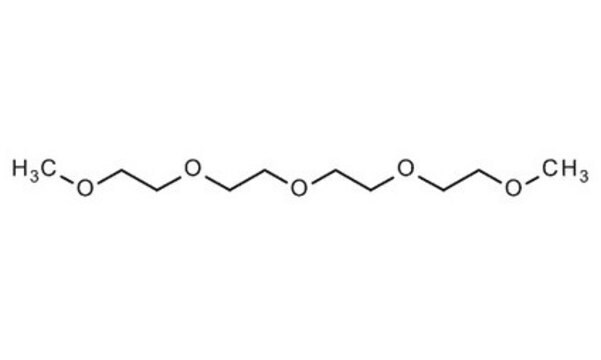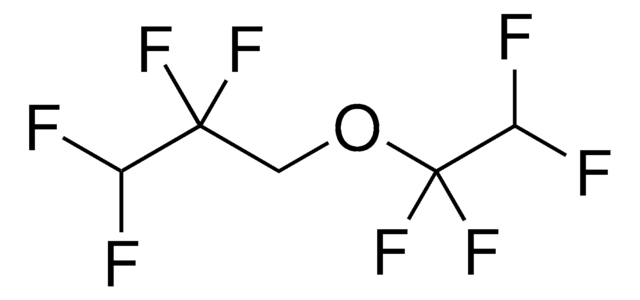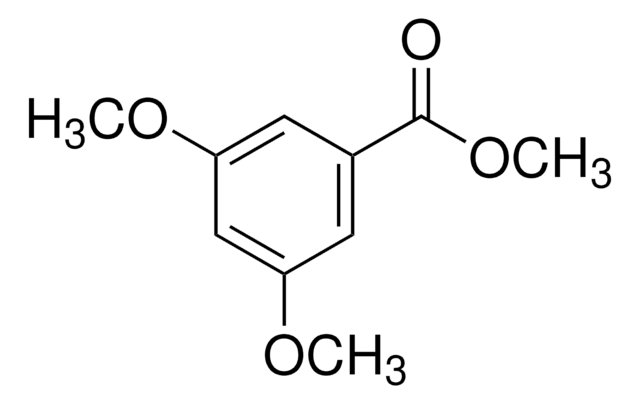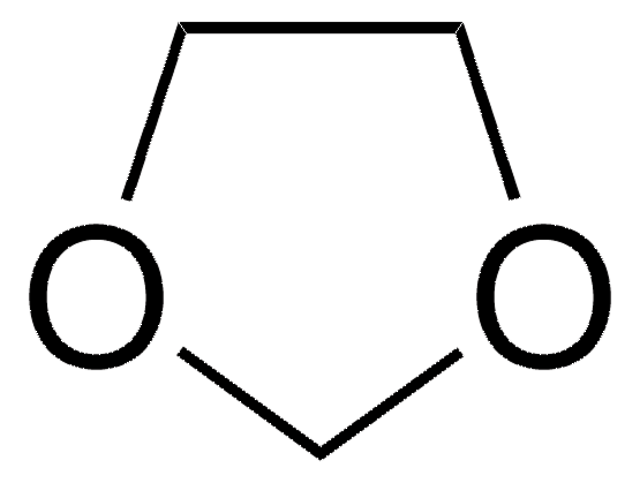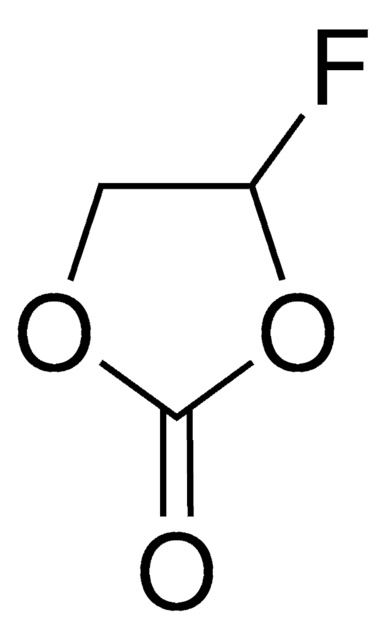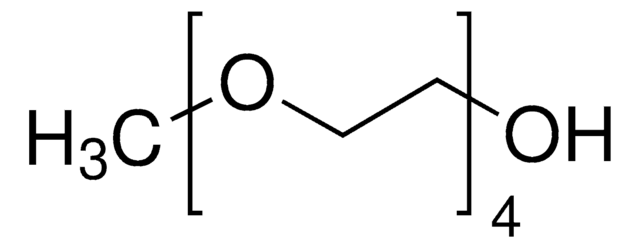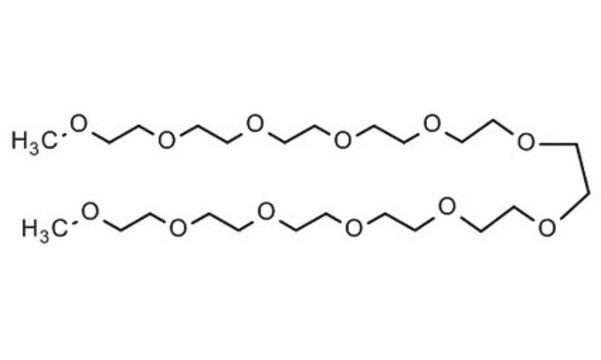172405
Tetraethylene glycol dimethyl ether
≥99%, cross-linking reagent click chemistry
Synonim(y):
2,5,8,11,14-Pentaoxapentadecane, Bis[2-(2-methoxyethoxy)ethyl] ether, Dimethoxytetraethylene glycol, Dimethyltetraglycol, Tetraglyme
About This Item
Polecane produkty
product name
Tetraethylene glycol dimethyl ether, ≥99%
gęstość pary
7.7 (vs air)
ciśnienie pary
<0.01 mmHg ( 20 °C)
Próba
≥99%
≥99.0% (GC)
Postać
liquid
temp. samozapłonu
510 °F
przydatność reakcji
reagent type: cross-linking reagent
reaction type: click chemistry
zanieczyszczenia
≤1.0% Water (Karl Fischer)
≤50 ppm Trace peroxide (as H2O2)
współczynnik refrakcji
n20/D 1.432 (lit.)
tw
275-276 °C (lit.)
mp
−30 °C (lit.)
gęstość
1.009 g/mL at 25 °C (lit.)
architektura polimerowa
shape: linear
functionality: homobifunctional
ciąg SMILES
COCCOCCOCCOCCOC
InChI
1S/C10H22O5/c1-11-3-5-13-7-9-15-10-8-14-6-4-12-2/h3-10H2,1-2H3
Klucz InChI
ZUHZGEOKBKGPSW-UHFFFAOYSA-N
Szukasz podobnych produktów? Odwiedź Przewodnik dotyczący porównywania produktów
Opis ogólny
Zastosowanie
Informacje prawne
Hasło ostrzegawcze
Danger
Zwroty wskazujące rodzaj zagrożenia
Zwroty wskazujące środki ostrożności
Klasyfikacja zagrożeń
Repr. 1B
Zagrożenia dodatkowe
Kod klasy składowania
6.1C - Combustible acute toxic Cat.3 / toxic compounds or compounds which causing chronic effects
Klasa zagrożenia wodnego (WGK)
WGK 1
Temperatura zapłonu (°F)
276.8 °F - closed cup
Temperatura zapłonu (°C)
136 °C - closed cup
Środki ochrony indywidualnej
Eyeshields, Faceshields, Gloves, type ABEK (EN14387) respirator filter
Certyfikaty analizy (CoA)
Poszukaj Certyfikaty analizy (CoA), wpisując numer partii/serii produktów. Numery serii i partii można znaleźć na etykiecie produktu po słowach „seria” lub „partia”.
Masz już ten produkt?
Dokumenty związane z niedawno zakupionymi produktami zostały zamieszczone w Bibliotece dokumentów.
Klienci oglądali również te produkty
Nasz zespół naukowców ma doświadczenie we wszystkich obszarach badań, w tym w naukach przyrodniczych, materiałoznawstwie, syntezie chemicznej, chromatografii, analityce i wielu innych dziedzinach.
Skontaktuj się z zespołem ds. pomocy technicznej